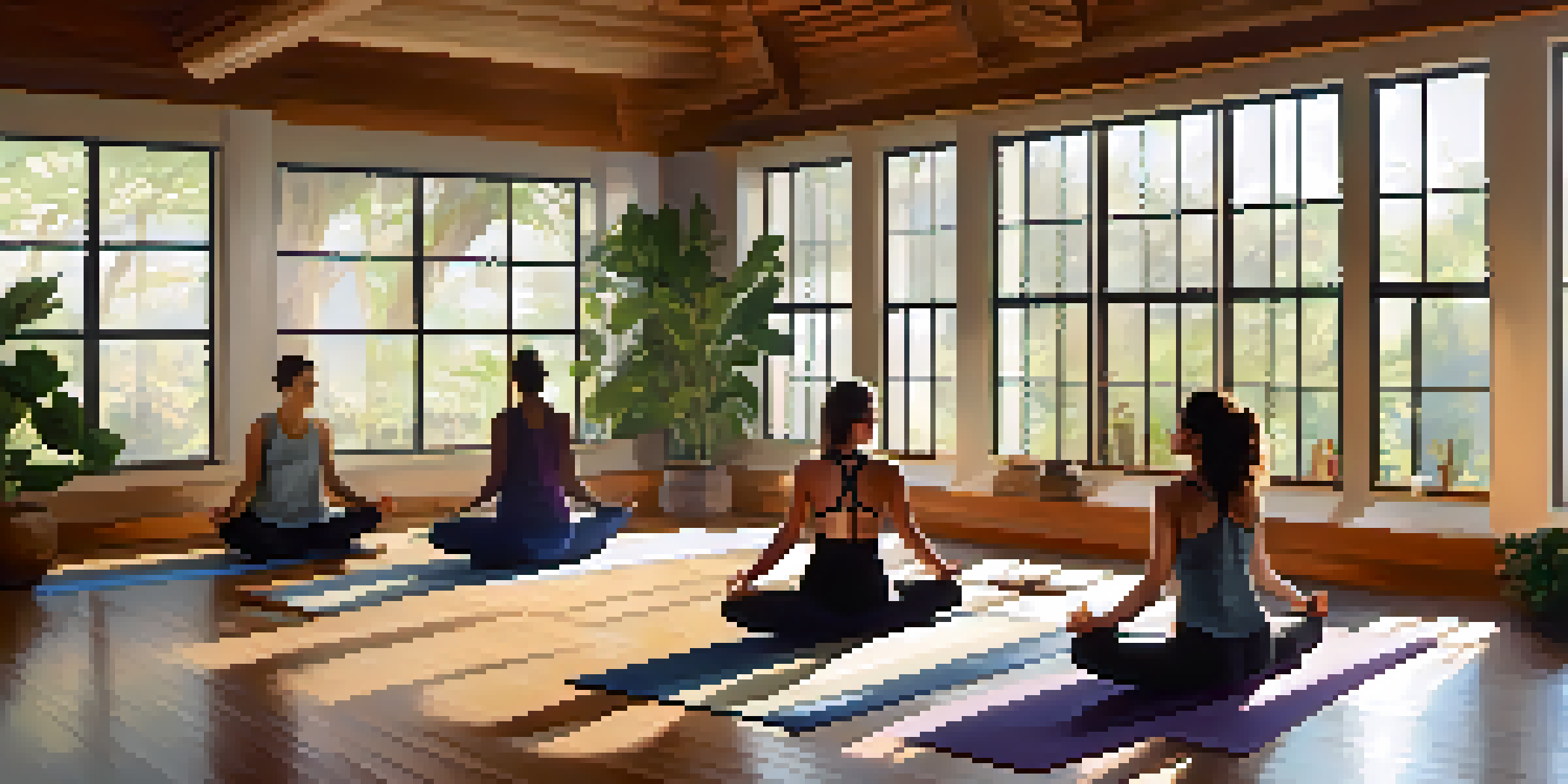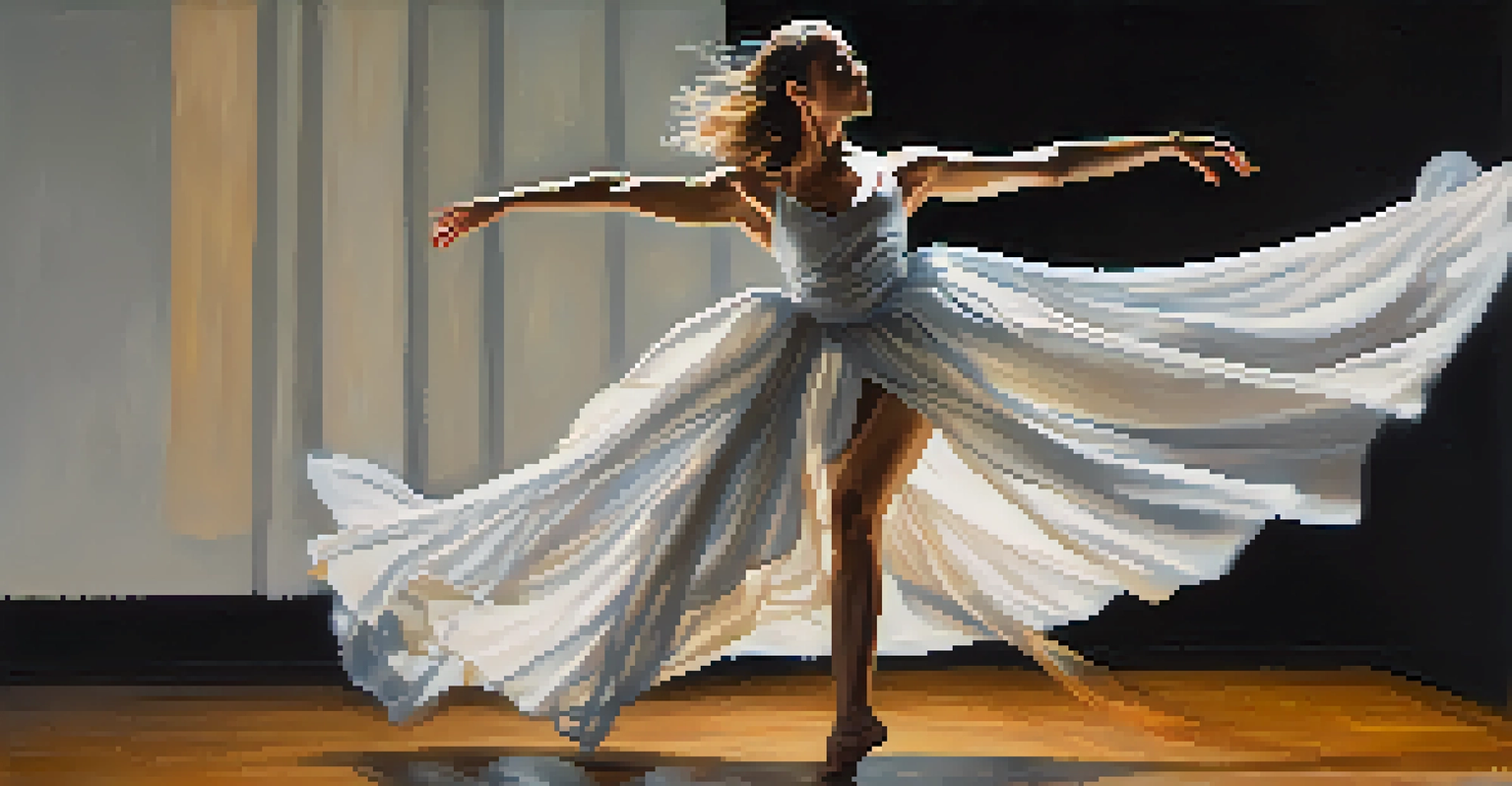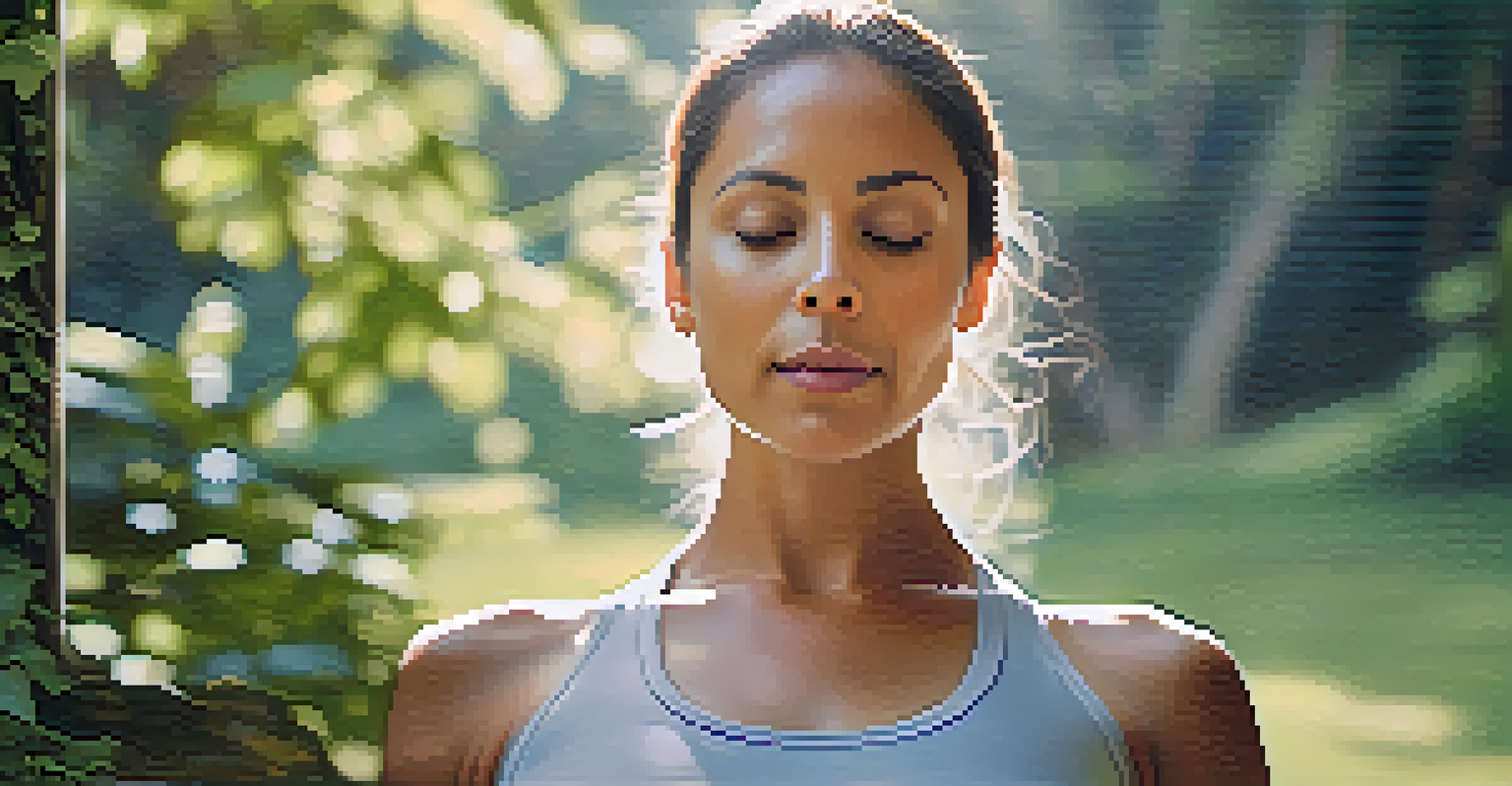Yoga in Performance Art: Blending Movement, Breath, and Emotion

The Intersection of Yoga and Performance Art
Yoga and performance art might seem worlds apart, but they share a common thread: the exploration of human expression. Both emphasize the importance of movement, be it through a graceful dance or a powerful yoga pose. This connection allows artists to tap into their physicality and emotions, creating a dynamic experience for both the performer and the audience.
Yoga is the journey of the self, through the self, to the self.
In performance art, every movement tells a story, much like each asana in yoga serves a purpose. By integrating yoga practices, artists can deepen their understanding of bodily awareness, enhancing their performance. This synergy not only enriches the art but also fosters a unique dialogue between the performer and the viewer.
Ultimately, the blending of these two disciplines invites artists to explore new dimensions of creativity. It encourages them to move beyond traditional boundaries, leading to innovative performances that resonate on multiple levels.
Breath: The Essence of Movement and Emotion
Breath is a fundamental aspect of both yoga and performance art, acting as the bridge between movement and emotion. In yoga, practitioners learn to control their breath, which in turn influences their physical movements and mental states. This practice cultivates a deeper connection to oneself, allowing for more authentic expression in performance.

In performance art, breath can transform a simple action into a profound statement. For instance, a slow, deliberate inhale followed by an extended exhale can evoke feelings of tension or release, mirroring the emotional journey of the piece. This intentionality can captivate the audience, drawing them into the artist's experience.
Yoga Enhances Artistic Expression
Integrating yoga practices deepens bodily awareness, allowing artists to convey emotions more authentically in performance.
Moreover, understanding the rhythm of breath can enhance timing and pacing in performances. Just as yoga practitioners synchronize breath with movement, artists can use breath to guide their actions, creating a harmonious flow that resonates with viewers.
Physical Awareness: Enhancing Performance Quality
Yoga encourages a heightened sense of physical awareness, which is crucial for any performer. By engaging in regular practice, artists develop a keen understanding of their bodies, leading to improved movement quality and expression. This awareness allows them to push their physical limits safely, unlocking new potential in their performances.
Art is the most beautiful of all lies.
For instance, a dancer who practices yoga may find greater flexibility and strength, enhancing their ability to execute complex movements. Similarly, actors can benefit from yoga's emphasis on posture and alignment, improving their stage presence and vocal projection. This physical foundation can be the key to captivating performances.
Moreover, the mindfulness cultivated through yoga can help performers manage their anxiety and nerves. By grounding themselves in their bodies, artists can approach their performances with confidence, leading to a more authentic and engaging experience for the audience.
Emotional Expression: Tapping Into Inner Feelings
Yoga is not just about physical movement; it's also a powerful tool for emotional exploration. Through practices like meditation and breathwork, artists can access deeper layers of their emotions, which can be channeled into their performances. This emotional depth can lead to more impactful storytelling on stage.
In performance art, the ability to convey genuine emotions can make a significant difference in audience engagement. When an artist draws from their own experiences and feelings, it creates a connection that resonates with viewers. By combining yoga's introspective practices with performance, artists can deliver performances that feel both personal and universal.
Breath Connects Movement and Emotion
Controlling breath in both yoga and performance art transforms actions into profound statements, enhancing audience engagement.
Furthermore, this emotional intelligence gained through yoga can enhance collaboration among artists. When performers understand their own emotions, they can better empathize with their collaborators, leading to richer and more cohesive performances.
Creating Flow: The Art of Seamless Transitions
One of the beautiful aspects of both yoga and performance art is the concept of flow. In yoga, practitioners learn to transition smoothly between poses, cultivating a sense of continuity. This principle can be applied to performance art, where seamless transitions between movements or scenes can enhance the overall experience.
For example, an artist might flow from a dramatic stillness into an explosive movement, creating a captivating contrast that keeps the audience on the edge of their seats. The ability to master these transitions can transform a performance from a series of disjointed actions into a cohesive narrative.
Moreover, this focus on flow can encourage improvisation, allowing artists to respond intuitively to the moment. Just as a yoga practitioner might adjust their pose based on their body's needs, performers can adapt to the energy of the audience or their fellow artists, creating a dynamic and engaging performance.
The Role of Community in Yoga and Performance Art
Both yoga and performance art thrive in community settings, fostering connection and collaboration among artists. In yoga classes, practitioners support one another, creating an environment of shared growth and encouragement. This sense of community can extend into performance art, where collaboration can lead to innovative projects and performances.
When artists come together, they can share techniques, ideas, and emotional experiences, enriching their creative processes. This collaborative spirit can lead to performances that are not only technically impressive but also deeply resonant on an emotional level.
Community Fuels Creative Collaboration
A supportive community in yoga and performance art fosters collaboration, leading to innovative and emotionally resonant creations.
Additionally, community-driven performances can create a powerful sense of belonging for both artists and audiences. By engaging with the community, performers can address relevant social issues, fostering dialogue and connection through their art.
Mindfulness: Cultivating Presence in Performance
Mindfulness, a key aspect of yoga, plays a crucial role in performance art. By practicing mindfulness, artists learn to remain present in the moment, allowing them to fully engage with their performance and audience. This presence can transform a routine performance into a captivating experience that resonates with viewers.
When performers practice mindfulness, they can notice subtle shifts in energy and emotion, both within themselves and in the audience. This awareness allows them to adjust their performance in real-time, creating a more interactive and responsive experience.

Moreover, cultivating mindfulness can help artists manage distractions and stay focused on their intentions. This clarity can lead to more powerful performances, where the artist's message is communicated with authenticity and impact.